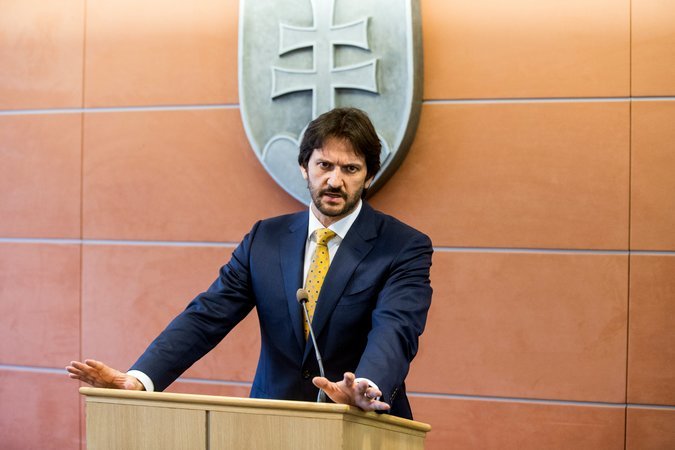He said that the killings of the journalist Jan Kuciak and his fiancée, Martina Kusnirova, whose bodies were found on Feb. 25, were being investigated by the biggest team assembled in the country’s history to look into a homicide.
He offered no suggestion about who might replace him as interior minister, or whether he planned to return to Parliament as a member.
For the past two weeks, since investigators said it was likely that Mr. Kuciak was killed because of his work, there have been calls for Mr. Kalinak to resign over a case that has gripped the nation’s attention.
As the crisis escalated, anger was increasingly directed at the prime minister, who struck a combative tone, accusing political opponents and nefarious “globalists” of stoking public rage. When he struck out against the philanthropist George Soros, accusing him of influencing recent events in Slovakia, it was a bridge too far — even for some members of Mr. Fico’s governing coalition.
Frantisek Sebej, a member of Parliament from the Most-Hid party, told reporters that the interior minister’s resignation had come too late. “He should have left while it was still enough,” Mr. Sebej said.

Leaders of two junior partners in the governing coalition, Most-Hid and SNS, met Monday with President Kiska to talk about the future of the country and ways to restore public trust. They did not disclose any details about the meeting.
According to estimates by Aktuality.sk, the news website where Mr. Kuciak worked, 120,000 people took to the streets in nearly 50 cities across Slovakia on Friday to express their disenchantment with current events.
Advertisement
Continue reading the main story
“I really hope the murder will be solved,” said Peter Nagy, an organizer of the protests. “If it’s not, it’s going to leave a stigma in the society.”
Newsletter Sign Up
Continue reading the main story
Thank you for subscribing.
An error has occurred. Please try again later.
You are already subscribed to this email.
One of the protesters’ demands was the involvement of international experts in the murder investigation, and many also called for the fall of the prime minister and early elections. “Enough with Fico,” was the repeated chant of the crowd in Slovak National Uprising Square in Bratislava.
The protests were believed to be the largest in the country since 1989, when it broke free from the Communist bloc.
If Most-Hid left the coalition, the government would lose its slim parliamentary majority. It could either fall, and be forced to call elections, or continue as a minority in the Parliament.
Analysts said that Mr. Fico might seek silent support from the far-right extremist party led by Marian Kotleba, although several members of SMER-SD, a leftist party, said they would never support joining forces with a group linked to neo-Nazis.
The Parliament can also force early elections, but that would require more than 90 votes in the 150-seat assembly, which is unlikely.
Mr. Kalinak has been the prime minister’s right-hand man since he came to power in 2006. For years, he seemed untouchable, surviving a variety of scandals and calls to step down.
But the execution-style killings of Mr. Kuciak and Ms. Kusnirova have roiled the country in ways not seen since it joined the European Union in 2004. Mr. Kuciak was looking into connections between the Italian crime syndicate ’Ndrangheta and government officials, and a group of news organizations published the results of his reporting after his death.
Mr. Kalinak became the fourth top-ranking government official to resign since the killings.
Continue reading the main story
Article source: https://www.nytimes.com/2018/03/12/world/europe/slovakia-robert-kalinak-jan-kuciak.html?partner=rss&emc=rss
Speak Your Mind
You must be logged in to post a comment.